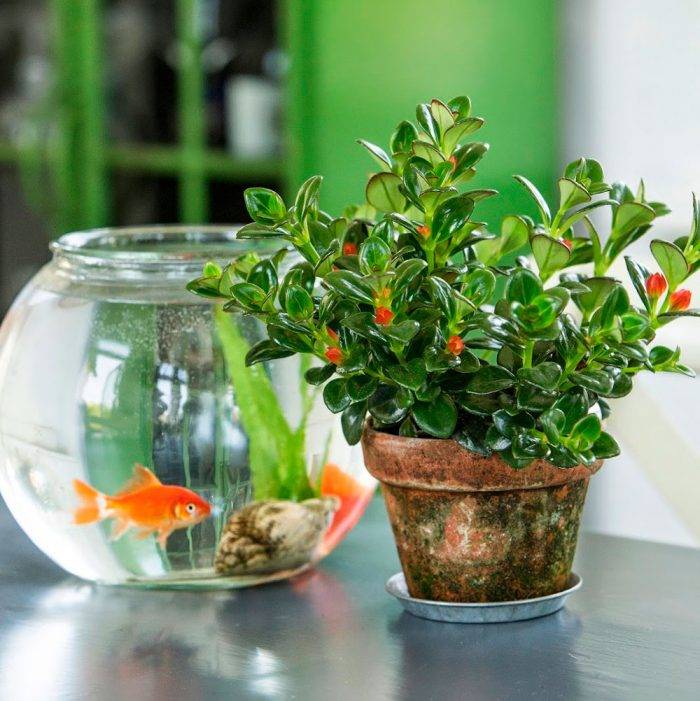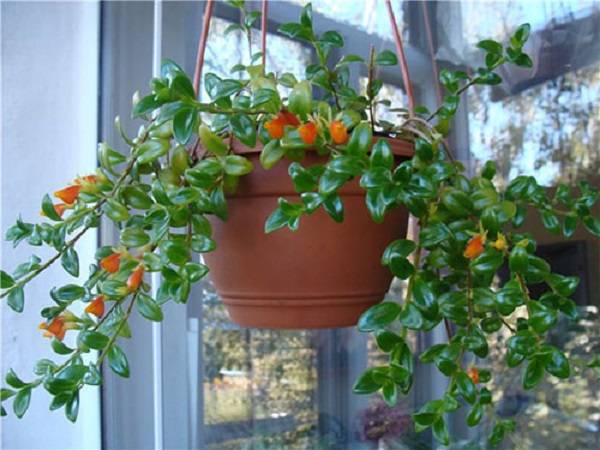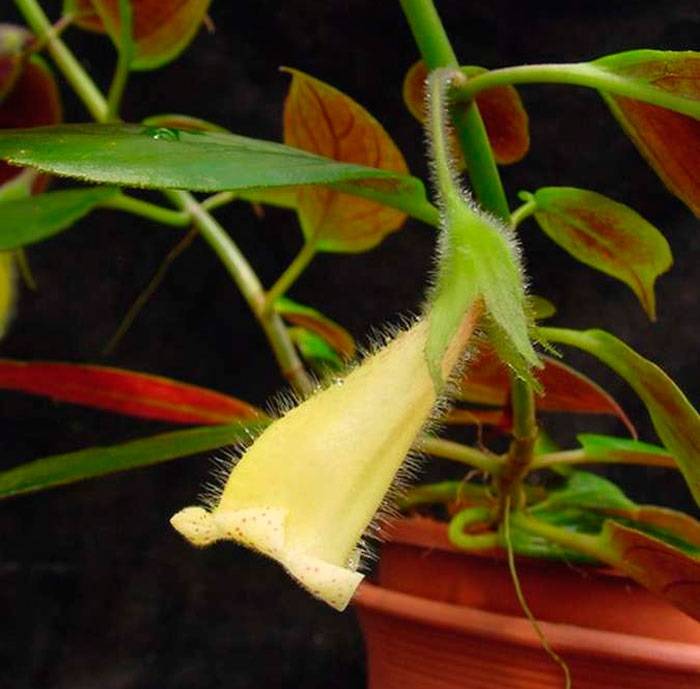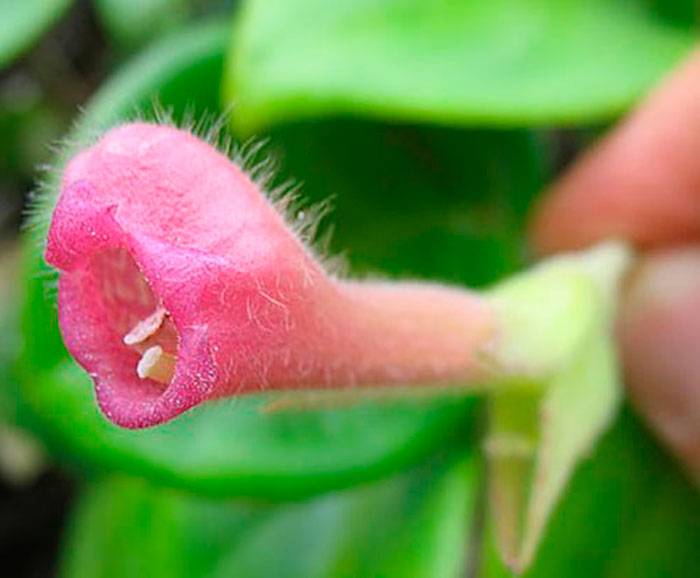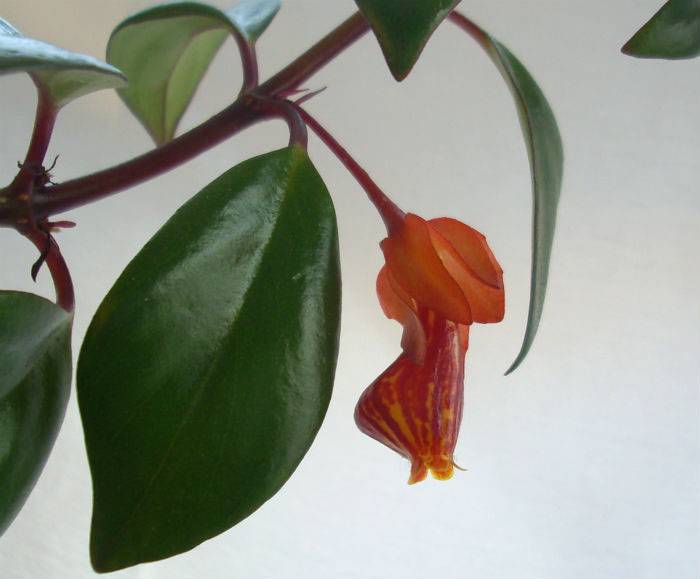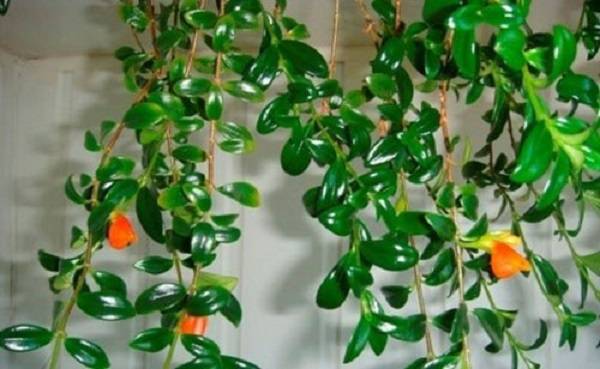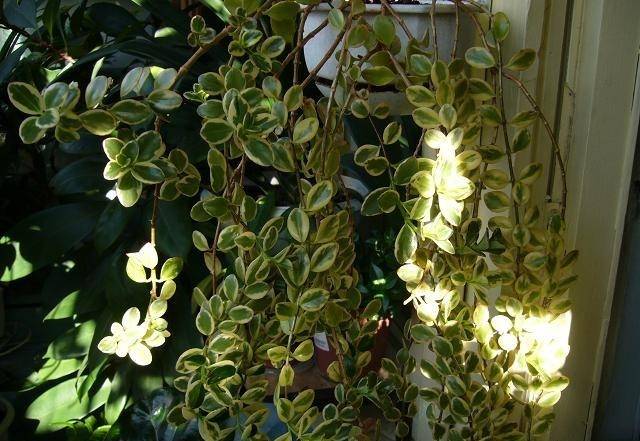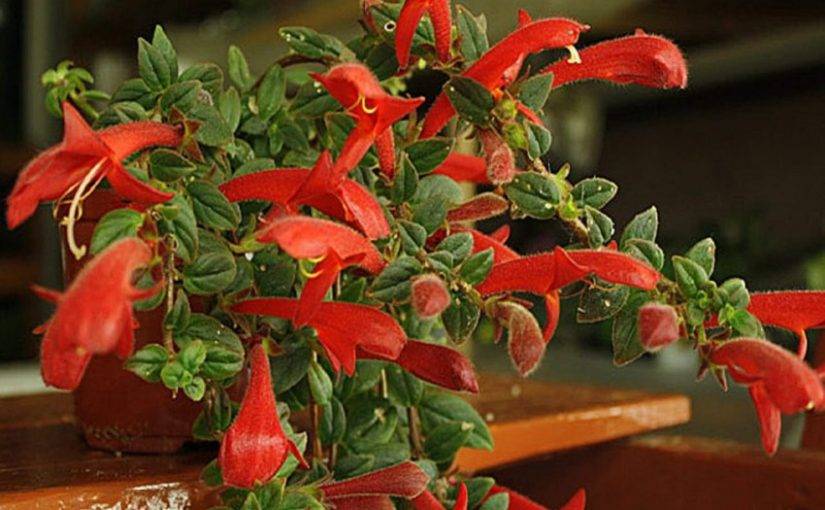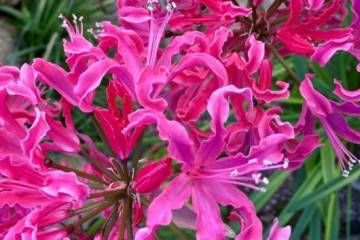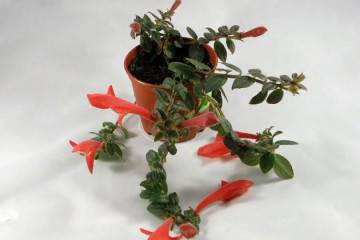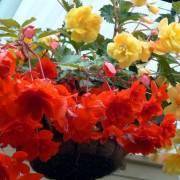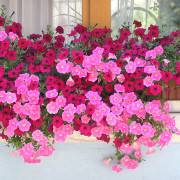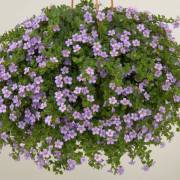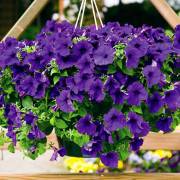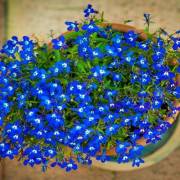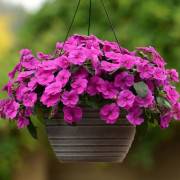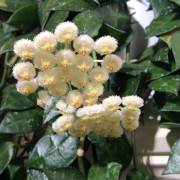Nematantus - home care for a houseplant
Content:
An unusual, almost fabulous, flower called a goldfish can be grown at home in a flowerpot or flowerpot. Nematantus is a popular ampelous plant that requires special care.
Nematanthus, or hypocyrtus - what kind of flower is it?
Nematantus (goldfish) is a beautiful graceful flower from the Gesneriev family. Its name comes from two ancient Greek words: "νημα" ("hair", "thin thread") and "άνθος" ("flower"). These words very accurately describe the external features of the plant, since its flowers are held on thin peduncles.
The hypocyrt flower (another name for nematanthus) is a small bush with bright petals and slightly shiny leaves.
Brief description and history of origin
Nematanthus is a flower that lives in the tropical rainforests of Brazil, the Amazon basin. The main feature of this amazing plant is long shoots capable of curling, intertwining, rooting in nodes. Nematantus is a type of climbing vines. In the wild, hypocyrt grows on larger plants.
On a thin, but strong stem, there are many small leaves with a dense cuticle that gives them shine. The length of the leaves is 3–10 cm. Egg-shaped or elliptical leaves are dark green or purple in color. Sometimes bluish streaks are visible on the leaves. The purple color is most often seen on the underside of the leaf, but not in all species. Sepals grow tightly to the peduncle. The petals grow together to form a dense, graceful corolla. Petals can be red, orange, pink, purple.
Popular superstitions
Many legends and folk superstitions are associated with hypocyrt (goldfish). People who grow nematanthus will be happy. In the house where this flower is looked after, love and prosperity will reign.
There is another belief, much closer to science. According to many gardeners, nematanthus purifies the air in the room.
Varieties of indoor plants with names
About 30 different species of nematanthus are known. Many of these varieties have long been loved by flower growers around the world.
Riverine nematantus
Riverine nematanthus is a climbing flower with very long (5–10 cm) green elliptical leaves. On the back, the leaves are partially purple-colored. The pharynx of the flower is expanded, and this is a great rarity among hypocyrtes. Sepal and corolla with petals are covered with fine down. Lemon yellow petals reach 5 cm in length.
Nematantus Fritsch
This type of hypocyrt is most often called a goldfish. Fritsch's large beautiful nematanthus grows up to 60 cm in height. It has rather long, wide leaves, covered with a light fluff on the underside. Large, bright pink, funnel-shaped flowers are also covered with fluffy villi. The diameter of the funnel of petals reaches 5 cm, and the maximum length of the leaves is 7.5 cm.
Nematanthus ankle
Ankle nematanthus is a climbing shrub with long (7–10 cm) emerald green leaves. Bright red petals with longitudinal yellow stripes grow up to 10 cm long. The flower is gracefully curved and has a large swelling.
Nematantus Vetstein
Nematantus Vetstein is one of the most common indoor goldfish species. Its main feature is very long climbing shoots with small leaves. The length of the shoots reaches 90 cm. The oval-shaped dark green leaves have a smooth, shiny coating.
In addition to several of the most common types of hypocitra, there are others that are equally charming.
Hypocyrta Glabra (naked) is distinguished by bright orange flowers with swelling and absence of villi. Shoots do not branch too actively. The plant has numerous small (2–4 cm) elliptical leaves. Dark green leaves shine with a glossy sheen, the underside is slightly lighter. The peculiarity of this species is that several flowers (up to three) can appear in the leaf axils at once. After the end of flowering, the leaves do not fall.
Nematantus Gregarius is famous for its large red-orange or yellow flowers that look like gold aquarium fish. Bright flowers stand out strongly against the background of small dark green oval leaves. Shoots grow rapidly. This variety is great for growing in wall pots, then the grower does not have to cut off excess shoots. An amazing indoor flower will decorate any room.
Nematanthus Tropicana is distinguished by its diamond-shaped leaves of dark green color. The yellow-orange flowers are covered with golden, red or terracotta stripes. This variety blooms actively throughout the summer.
Variegated hypocyrt (variegated) is famous for the fact that its leaves are painted in two colors. The core of the sheet can be lighter than the edges. Very often, the dark green core is bordered with white edges.
How to care for nematanthus at home
Florists love nematanthus, home care for this flower should be thorough. An exotic plant from South America requires compliance with many conditions. You need to carefully monitor the temperature and lighting, water and feed on time.
Illumination and temperature conditions
Nematantus needs diffused bright lighting. In summer, a planter or flower pot can be placed near a window on the west or east side. If the window faces south, you need to take care of a little shading, otherwise the flower will get burned.
Maintaining a warm temperature is the most important thing in caring for a sensitive tropical plant. In winter, the room temperature should be at least 14–16 ° C. If it gets colder by even a degree, then the nematanthus, most likely, will not stand it. At a temperature of 7 ° C, the leaves die off and fall off, the flower may die. In summer, the flower needs a temperature of 19-24 ° C. It is desirable that it gets 5 ° colder at night than during the day. Hypocyrta does not tolerate extreme heat and dries up at 27 ° C.
Watering rules and humidity
In summer, the hypocyrt is watered as the top layer of the earth dries up. The larger the leaves, the more water the flower needs. Watering should only be done with soft water at room temperature. Water must be defended before watering. In winter, the amount of moisture is slightly reduced.
Top dressing and soil quality
The soil for the hypocyrt should be light, loose and easy to let in air. The acidity (pH) should be 5.5–6. To prepare the soil, you will need several components:
- leafy land;
- peat;
- humus;
- sand;
- charcoal;
- sphagnum or pine bark.
Expanded clay, vermiculite or brick chips are required for drainage.
Nematantus needs to be periodically fed with phosphorus-potassium fertilizers for flowering plants. Fertilize them every 2 weeks from March to September. In winter, the flower is fertilized once every 1.5 months.
Flower container size
The nematanthus has a small root, so it needs a small pot or wall-mounted planter. In unnecessarily spacious flowerpots, this flower does not grow well. In addition, there flowers read to ache, pests are often found in them.
Pruning and replanting
The nematanthus needs a transplant every 2-3 years. In the spring, immediately after the appearance of a young shoot, you can transplant the plant. The diameter of the new pot should be only 2-3 cm larger than the old one.
In October, after the end of flowering, it is necessary to form a bush annually. If the leaves begin to crumble, then you can cut off the hypocyrt. Old branches should be shortened by half the length, and young ones by a third. Without annual pruning, foliage will become less dense.
Features of flowering plants
The tropical plant differs from many others in its unusual flowering. You need to carefully look after the flower in order to enjoy its beauty for many years.
A period of activity and rest
Nematanthus begins to bloom in the spring and ends in the fall. It needs enough light to bloom.
The peculiarity of hypocyrt is manifested in the fact that it can bloom in winter in good lighting. This is due to the fact that only young shoots form buds of this plant.
Types and shape of flowers
The flowers are shaped like a small fish. Because of this form, nematanthus received an additional name.
Why does not it bloom
Many inexperienced growers do not understand why nematanthus does not bloom. His care was not good enough and some rules were violated. The flower grower should check if the hypocyrte's pot is too spacious, whether the requirements for temperature, lighting, watering, feeding, etc. are met.
Flower reproduction methods
Hypocyrtu can be grown from seeds or cuttings, and you can buy a sapling from the store.
Growing from seeds
It is necessary to prepare the seed substrate in advance. Before planting, it must be loosened and watered. The seeds of nematanthus are very small, resembling dust, so they must be handled very carefully. They are poured out of the seed box, laid out on the soil surface and covered with glass. Then you need to wait a few days for the seeds to sprout, and then move the glass a little. The hardened sprouts are transplanted into pots, 5-6 seedlings each.
Cuttings
There is a much easier way to grow nematanthus. Propagation by cuttings will help grow the flower much faster. First, the substrate is prepared, then several cuttings 8–10 cm long are cut off from the adult plant. The leaves are removed from the lower part of the cuttings, and then they are planted in the soil.
Growing problems, diseases and pests
One of the most capricious indoor plants is a hypocyrt; caring for it at home can be associated with many problems. It is important to watch closely for signs of disease and pests. For nematanthus, pests such as aphids, mealybugs, thrips, mites, and also a fungus are dangerous.
When a fungus appears, the flower must be treated with a fungicidal agent. If aphids, ticks or thrips have settled on the plant, then the flower is treated with insectoacaricides. Mealybugs must be removed by hand with a piece of cotton wool dipped in alcohol.
Nematantus is able to purify the air in the house. For good care, he will thank his owner with lush flowering. A beautiful flower will adorn any home and will delight the owners and guests for a long time.
